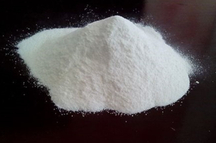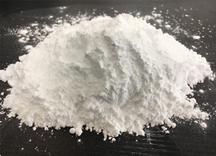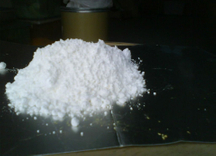
In the world of crop nutrition, understanding the role of urea is crucial for achieving optimal yields and healthy plants. Urea, a commonly used nitrogen fertilizer, offers a range of benefits when applied correctly. However, its performance can be influenced by various factors, making it essential for farmers and agronomists to grasp the nuances of its application. This article explores the significance of urea in crop nutrition, delving into its benefits and the factors that can affect its performance. Additionally, it provides valuable insights into best practices for balancing urea application, enabling farmers to maximize its efficacy and ensure sustainable crop growth. Whether you are an experienced agricultural professional or a newcomer to the field, gaining a comprehensive understanding of urea's role in crop nutrition is key to optimizing agricultural practices and achieving desired outcomes.
The Benefits of Urea in Crop Nutrition
Urea is a widely used and highly effective fertilizer in crop nutrition. Its benefits are numerous and can significantly contribute to the growth and development of plants. One of the key advantages of urea is its high nitrogen content. Nitrogen is an essential nutrient that plays a crucial role in plant growth, as it is a major component of proteins, chlorophyll, and DNA. By supplying plants with a readily available source of nitrogen, urea helps to promote healthy leaf and stem development, leading to increased yields.
In addition to providing plants with nitrogen, urea also acts as a slow-release fertilizer. This means that it releases nitrogen gradually over time, ensuring a steady and sustained supply of nutrients to the plants. This is particularly beneficial in areas with heavy rainfall, as it helps to prevent nutrient leaching and wastage. By delivering nitrogen in a controlled manner, urea ensures that plants have access to the nutrients they need, when they need them, resulting in optimal growth and productivity.
Furthermore, urea is a cost-effective fertilizer option. Compared to other nitrogen fertilizers, such as ammonium nitrate or ammonium sulfate, urea is relatively affordable. Its availability and affordability make it a popular choice among farmers, especially those with large agricultural operations. By using urea in crop nutrition, farmers can maximize their investment and achieve higher returns on their crops.
Another advantage of urea is its versatility. It can be applied to a wide range of crops, including cereals, vegetables, fruits, and legumes. This flexibility makes it a valuable tool for farmers cultivating different types of crops. Whether it is used as a top dressing, a basal application, or as a foliar spray, urea can be easily incorporated into existing farming practices, making it a convenient choice for farmers worldwide.
Factors Affecting Urea's Performance in Crop Nutrition
Urea, a commonly used fertilizer in crop nutrition, plays a vital role in enhancing plant growth and productivity. However, its performance can be influenced by several factors that need to be considered by farmers and agricultural experts. Understanding these factors is crucial in order to optimize the use of urea and maximize its benefits in crop production.
One of the key factors affecting urea's performance is soil pH. Urea hydrolyzes in the soil to form ammonium ions, and this process is greatly influenced by the pH level. In alkaline soils, urea hydrolysis is slower, resulting in a slower release of ammonium ions. On the other hand, in acidic soils, urea hydrolysis is faster, leading to a rapid release of ammonium ions. Therefore, it is important to adjust the soil pH to an optimal range for urea hydrolysis, which is typically around neutral pH.
Another factor that affects urea's performance is temperature. Urea hydrolysis is a temperature-dependent process, meaning that higher temperatures accelerate the breakdown of urea into ammonium ions. In warm climates, urea can be rapidly hydrolyzed, resulting in a quick release of nitrogen, which may lead to nutrient losses through leaching or volatilization. In contrast, in colder climates, urea hydrolysis is slower, allowing for a more controlled release of nitrogen. It is important for farmers to consider the temperature conditions in their region and adjust urea application accordingly.
Soil moisture also plays a significant role in urea's performance. Adequate soil moisture is essential for the hydrolysis of urea and the subsequent uptake of nitrogen by plants. Insufficient moisture can hinder the hydrolysis process and limit the availability of nitrogen to crops. On the other hand, excessive moisture can lead to nitrogen losses through denitrification or leaching. Maintaining proper soil moisture levels through irrigation or water management practices is crucial for optimizing urea's performance.
Furthermore, the presence of certain soil enzymes and microorganisms can affect urea hydrolysis. Urease, an enzyme produced by some soil bacteria and fungi, catalyzes the hydrolysis of urea. The activity of urease can vary depending on soil conditions, such as pH and moisture. Additionally, the presence of nitrifying bacteria can further convert ammonium ions into nitrate, making nitrogen more available for plant uptake. Understanding the microbial activity in the soil can help farmers make informed decisions regarding urea application and timing.
Best Practices for Balancing Urea Application
Balancing urea application is crucial for maximizing crop productivity and minimizing environmental impact. Urea, a commonly used nitrogen fertilizer, provides essential nutrients to plants and promotes vigorous growth. However, improper application can lead to nitrogen loss, reduced efficiency, and potential harm to the ecosystem.
To achieve the best results, it is important to follow certain practices when applying urea. First and foremost, timing is key. It is advisable to apply urea when the crop is actively growing and in need of nitrogen. This ensures that the plants can utilize the nutrient effectively and reduces the risk of nitrogen leaching into groundwater or volatilizing into the atmosphere.
Another important consideration is the application method. Urea can be applied to the soil surface or incorporated into the soil. Surface application is suitable for crops with well-established root systems, while incorporation is preferred for young or shallow-rooted plants. Incorporating urea into the soil reduces the risk of nitrogen loss through volatilization and increases its availability to the plants.
Proper dosage is also crucial for balancing urea application. Applying too much urea can lead to nitrogen runoff, which can contaminate water bodies and harm aquatic life. It is important to calculate the optimal dosage based on the crop's nitrogen requirements and the soil's nutrient-holding capacity. Soil testing can provide valuable information on the nutrient levels and guide the application process.
Furthermore, it is recommended to split the urea application into multiple doses throughout the growing season. This practice ensures a more consistent supply of nitrogen to the plants and minimizes the risk of nutrient overload or deficiency. Splitting the application also allows for adjustments based on the crop's growth stage and changing nutrient needs.
In addition to these practices, it is essential to consider environmental factors such as weather conditions and soil moisture. Applying urea during dry conditions or before heavy rainfall can increase the risk of nitrogen loss. It is advisable to monitor weather forecasts and adjust the application timing accordingly.
Conclusion
Urea is a beneficial choice for farmers seeking to improve crop yields due to its high nitrogen content, slow-release properties, cost-effectiveness, and versatility. It promotes healthy growth and development in plants, leading to higher productivity and profitability. Urea's performance in crop nutrition is influenced by various factors such as soil pH, temperature, moisture, and microbial activity. Considering and managing these factors appropriately can optimize urea usage and enhance crop productivity while minimizing nutrient losses. Balancing urea application requires careful consideration of timing, application method, dosage, and environmental factors. By following best practices, farmers can optimize crop productivity, minimize nitrogen loss, and protect the environment. This not only benefits farmers but also contributes to sustainable agriculture and the preservation of natural resources.

















